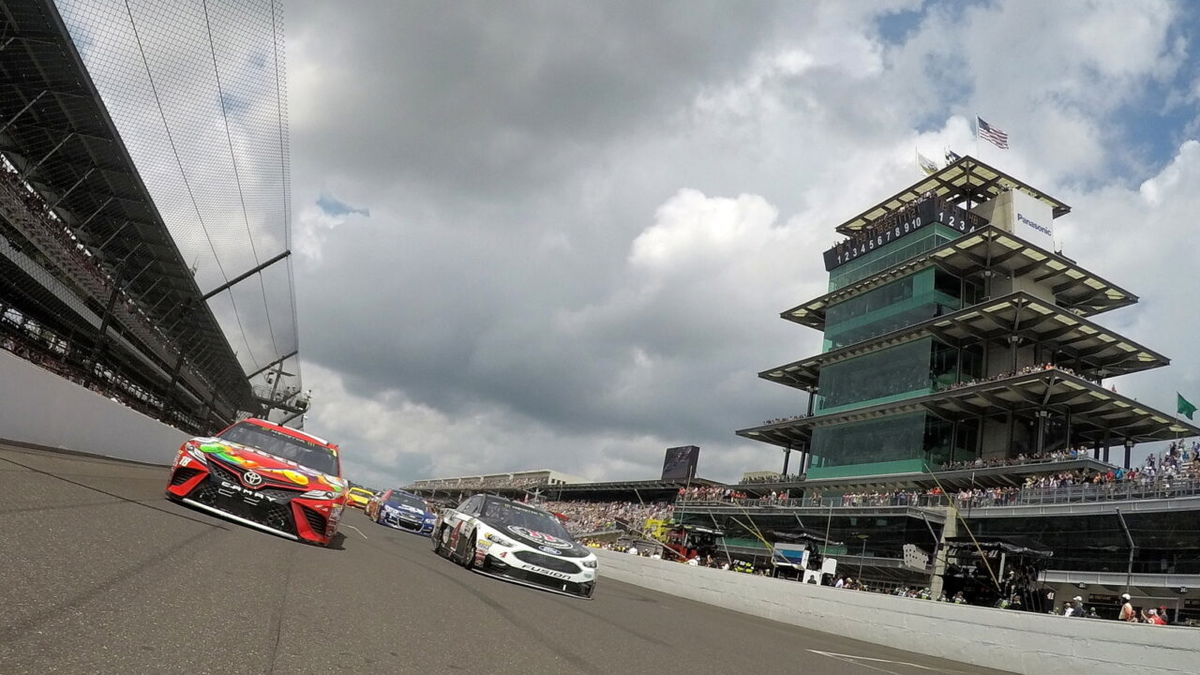

Indianapolis Motor Speedway is the beating heart of motorsports, a place where legends are made and history hangs in the air. From the Indy 500 to NASCAR’s Brickyard 400, it’s a track that’s seen it all: triumphs, heartbreak, and game-changing innovations. Back in 2002, Indy teamed up with the University of Nebraska-Lincoln to roll out the SAFER barrier, a Steel and Foam Energy Reduction system that slashed the risk of high-speed crashes. It was a revolution that quickly became the gold standard across NASCAR, saving drivers like Dale Earnhardt Jr. and Ryan Newman from catastrophic injuries. Indy didn’t just host races. It set the pace for safety in a sport where split seconds can mean everything.
Watch What’s Trending Now!
But yesterday’s Xfinity Series race at Indy ripped open a wound that’s been festering for years. In the Pennzoil 250, Austin Hill and Aric Almirola were locked in a fierce duel through Turn 3. Hill’s aggressive nudge sent Almirola’s car sliding, and what looked like a hook to the right rear launched Almirola into the Turn 4 wall. This wasn’t just any hit. It was a bone-rattling crash into a section of bare concrete, a spot untouched by the very SAFER barriers that Indy pioneered. The impact was brutal, leaving Almirola shaken as he climbed from his wrecked car, comparing it to his back-breaking 2017 Kansas crash that sidelined him for months.
The fallout was swift and loud. Almirola didn’t hold back, telling reporters, “That’s one of the hardest hits I’ve taken in my NASCAR career.” He was convinced Hill’s move was deliberate: “He blocked me three times… I got him loose… and he just turned left and hooked me in the right rear.” Hill insisted it wasn’t intentional, but NASCAR wasn’t buying it. They slapped him with a rare five-lap penalty for aggressive driving. The punishment underscored the severity of the incident, but it didn’t overshadow the bigger issue: how does the track that birthed the SAFER barrier still have exposed concrete in 2025?
ADVERTISEMENT
— No Context NASCAR (@NoContextNyoom) July 26, 2025
The question cuts deep because Indy is supposed to be the standard-bearer. Tracks like Daytona, Talladega, Michigan, and Pocono have blanketed their outside walls with SAFER barriers, ensuring full coverage to handle high-speed chaos. Yet Indy, the track that started it all, still lags. NASCAR historian @nascarman put it bluntly on X: “For all the credit Indy gets for developing the SAFER barrier, they have a lot of exposed concrete walls still. All other superspeedways (Daytona, Talladega, Michigan, Pocono) have it 100% around the outside walls.” It’s a stinging contrast for a venue that has hosted everything from Formula 1 to street-style stock car races, always pushing the envelope — except, it seems, when it comes to completing its safety overhaul.
Retrofitting a historic track like Indy is not a walk in the park. The place is a motorsports cathedral, layered with tradition, architectural challenges, and logistical hurdles. But when a crash like Almirola’s exposes a glaring gap in protection, the excuses begin to feel thin. Drivers today are piloting faster and heavier cars than ever, and the margin for error is razor-thin. Indy once led the way. Yesterday’s wreck felt like a gut check, a jarring reminder that even a pioneer can fall behind if it doesn’t keep evolving.
ADVERTISEMENT
The incident has sparked a broader conversation. Fans, drivers, and insiders are now asking why Indy hasn’t fully committed to SAFER coverage. There’s growing talk about whether NASCAR should mandate it for all ovals, regardless of size or tradition. Almirola’s crash wasn’t just a racing incident. It was a wake-up call. The sport has come too far to let safety slide, especially at a track that has long claimed to set the bar. Until every high-impact zone is fortified, Indy’s legacy in safety feels unfinished, and the question remains whether “SAFER” is truly safe enough.
That same Indy track, now under scrutiny for its safety gaps, is also the site where drivers are continuing to make history this weekend. And one NASCAR star just etched his name into the record books.
ADVERTISEMENT
Chase Briscoe scores pole at Brickyard.
Chase Briscoe turned heads at Indianapolis Motor Speedway by snagging the Brickyard 400 pole with a blistering lap of 183.165 mph. He became the first driver to win poles at NASCAR’s three crown jewel races, including the Daytona 500, Coca-Cola 600, and now the Brickyard, all in the same season. His late-session run edged out Bubba Wallace’s 183.117 mph lap, securing the top spot and leading a Toyota sweep of the top five starting positions.
Briscoe’s nine career poles, with five coming this season, mark him as one of the sport’s premier qualifiers. Doing it in his home state of Indiana, on the same weekend his sister got married, made it extra sweet. He’s still chasing his first Brickyard win, but this pole puts him in a prime position.
ADVERTISEMENT
The Joe Gibbs Racing driver’s achievement wasn’t the only JGR highlight. Teammate Ty Gibbs qualified fifth at 182.445 mph, giving him an edge in NASCAR’s first In-Season Challenge, where a $1 million prize is up for grabs.
Ty Dillon starts 26th, while last week’s race winner Denny Hamlin faces an uphill battle after crashing in qualifying and being relegated to 39th. Defending Brickyard champ Kyle Larson will roll off 13th. With a rain-shortened practice session behind them, Briscoe’s pole and JGR’s strong showing suggest they are ready to fight for Indy glory, even as the track’s safety gaps remain under the microscope.
ADVERTISEMENT
ADVERTISEMENT
ADVERTISEMENT

